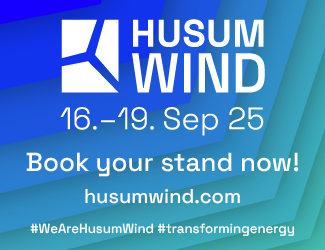Meyer Werft is currently looking back on its 225th anniversary. With a turnover of 2 bn € per year, the shipyard is an important economic engine – in Emsland and beyond
It is an extraordinary achievement to look on 225 years of ship building. We developed our family company further with[ds_preview] pioneering spirit and courage and permanently adapted to changing markets to assert ourselves over state-owned and partly state-owned competitors,« Bernard Meyer said on the occasion of the »birthday«.
In 1795, company founder Willm Rolf Meyer began building wooden sailing ships, at that time under the company name Thurm Werft. In 1872 steel ships followed on the initiative of Joseph L. Meyer. The »Triton« paddle steamer in 1872 was the first ship of this kind. By this time, the company was in its third generation of family management under Joseph Lambert Meyer. 90% of a ship was built by the yard itself at that time. In 1913, the construction of the »Graf Goetzen« was another highlight. After its completion, this combined ship for both passengers and cargo was dismantled into its component parts, packed into crates, transported to Lake Tanganyika in what is now Tanzania, and reassembled. It remains in use there to this day, where it has become the stuff of legends in many books and films.
World history in Papenburg
The economic crash and two world wars plunged the world into difficult times. But the decision taken at an early stage not to construct naval vessels meant that the shipyard was soon able to rebuild its operations. A new ship was delivered in 1948, in the form of the light vessel »Elbe 1« (Bürgermeister Oswald), which, due to numerous interruptions, took a total of nine years to build. The completion of »Elbe 1« became important for the whole Ems region, when bridges and railroad lines were renovated for the ship’s conveyance down the river Ems.
In the post-war period, Joseph-Franz Meyer was soon concentrating his attention on the international markets. The »Mauritius« was an important order by the British Common-wealth. The ship was built in accordance with the regulations of the British Lloyd’s and Ministry of Transport for deployment in the former British colony Mauritius.
In the late 1950s the long term partnership with Indonesia began. This partnership resulted in many passenger vessels being built for the South East Asian archipelago state. In total, 34 ships were built for Indonesia. Joseph-Franz and Godfried Meyer were also responsible for the construction of many ferries for Scandinavian shipping companies, but also for entering the gas tanker market. Yet another unusual move, and one which was to have a considerable effect on the company’s development, came about in 1974. In the middle of the Cold War, the shipyard got a contract to build six gas tankers for the Soviet Union – and at the same time the company began building a new shipyard on the edge of Papenburg, directly on the river Ems.
The new compact shipyard at the company’s present location coupled with its entry into the cruise ship market marked the start of its now famed development into one of Europe’s leading shipbuilding businesses. The shipyard established its market position with the construction of two covered shipbuilding docks, an innovative laser and pipe centre, and a large and highly specialised supplier family. Currently a new modern logistics centre is under construction.
7th generation
The »Homeric« in 1986 was the first large-scale complex project in the cruise ship market to be completed by Meyer Werft in Papenburg. Today the shipyard specialises in the construction of cruise ships. Since 1985, 50 units have already been built. Managing Director Tim Meyer and his two brothers represent the seventh generation at the helm of the family business. Senior boss Bernard Meyer had handed over parts of the management to his sons in recent years. Jan Meyer heads the Turku site.
Meyer also owns the Neptun shipyard in Rostock (since 1997) and Meyer Turku (since 2014). The order book of the company currently contains nine cruise ships, including seven with LNG technology, ensuring capacity utilisation until 2023. Another seven ships are being built in Turku and the »Mardi Gras« (5,200 Pax) will be the first newbuilding to be delivered to Carnival in the near future. In addition to river cruisers, the Neptun shipyard builds the engine room modules for both major shipyards.
Three new cruise liners are delivered in the anniversary year. The »Iona« for the British shipping company P&O Cruises, which will be transferred to the North Sea via the Ems in the usual manner. With 184,700 GT and space for 5,200 passengers, she is the largest ship ever built in Papenburg. And that is as much as you can get on the Ems. This ship will be followed by the much smaller »Spirit of Adventure« (1,000 passengers), the second ship for Saga Cruises and the »Odyssey of the Seas« (4,100 passengers) delivered for Royal Caribbean International.
With a turnover of 2 bn € per year, the shipyard is an economic engine in Emsland, offering 3,625 jobs in the region; together with Neptun in Rostock, the figure is more than 4,300, and including the workforce in Turku, it is as high as 7,000. 395 new employees were hired in Papenburg alone in the past twelve months, according to the shipyard, and all 45 trainees were taken over. The management repeatedly emphasizes that it is still looking for colleagues in all areas.
At the same time, the company continues to invest in the shipyard facilities. A logistics center is currently under construction, which is scheduled for completion in early 2021. Around 40mill. € will be invested here. In order to expand its technological leadership, new topics such as the fuel cell or Power-to-X are moving into focus after LNG.












